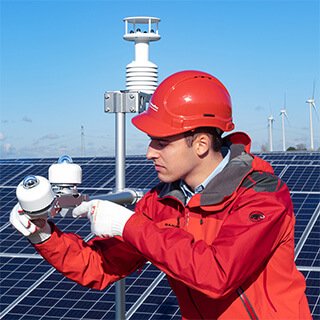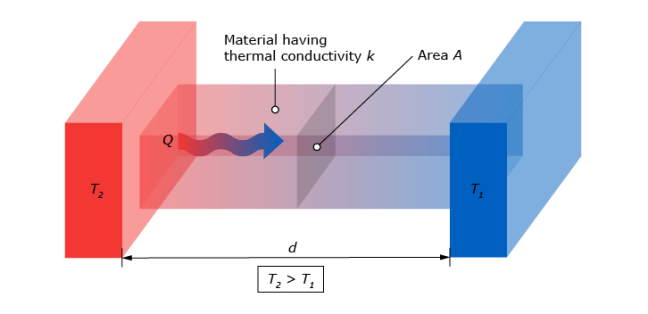Top 5 applications involving pyranometers
Pyranometers are essential instruments used in a wide range of applications, to measure solar radiation with great accuracy. From optimising solar panel performance to supporting climate studies, these sensors provide valuable data for industries that depend on accurate energy analyses. This article explores the top five applications involving pyranometers.
We begin by explaining what a pyranometer is and how it works. Then, we discuss its role in photovoltaic systems, or solar power systems, where it ensures peak efficiency. Next, we cover its significance in climate research, where it helps scientists understand the earth’s energy balance. We also look at how pyranometers are used in agricultural monitoring to optimise crop growth and in weather forecasting to improve predictions. Finally, we examine their application in building energy management, where they contribute to energy-efficient design.

What are pyranometers and how do they work?
A pyranometer measures the intensity of sunlight that hits a specific location at any given time. It works by using a thermopile sensor, which is a type of thermal sensor that converts heat flow into a small voltage. This signal is then measured and used to calculate the amount of solar radiation in watts per square meter (W/m2).
This process is similar to how a heat flux meter measures heat flow, but instead of measuring heat transfer within materials, a pyranometer measures the heat energy from the sun. Read the articles What is heat flux? and Pyranometers: all you need to know for more in-depth information on this topic.
1. Solar monitoring at photovoltaic systems
Solar energy is rapidly becoming one of the most important and fastest-growing forms of energy generation worldwide. Pyranometers play an important role in this transformation, as the world shifts more towards sustainable energy sources. Accurately measuring solar radiation is crucial for maximising the efficiency of photovoltaic systems. By using pyranometers, it’s possible to detect system faults, identify when solar panels are dusty or obstructed, and optimise the orientation and positioning of the panels to ensure they receive the maximum amount of sunlight.
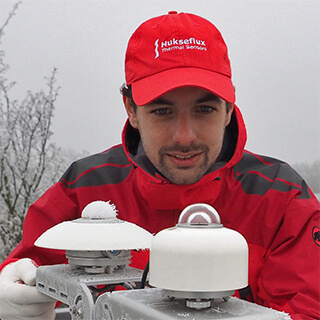
pyranometer (model SR30-M2-D1)
being used in cold climates.
Pyranometers measure the amount of solar energy reaching solar panels or the fraction that gets reflected, which is called albedo. Recent developments by Hukseflux, market leader in solar radiation measurement, have made it possible to perform these measurements under different climate conditions all over the world.
For example, built-in heaters and ventilators reduce the effects of dew and frost without producing large zero offsets, with an operating temperature range from -40 to +80 °C. Additionally, integrated surge protection ensures that the newest line of Hukseflux pyranometers can withstand the extreme conditions often encountered at PV power plants.
Both commercial and residential solar installations can use this data to optimise energy output and save costs. Pyranometers play an increasingly important role in solar energy measurement, and this brings us to the second most common application of these devices: fighting climate change and reducing reliance on fossil fuels.
2. Understanding climate dynamics with pyranometers
The complexity and vast scale of the climate, both in space and time, make it very challenging to research. However, pyranometers are extremely helpful for understanding the earth's energy balance (see Figure 2) and how solar radiation affects global climate systems. Scientists use these instruments to measure the amount of solar energy absorbed by the earth's surface and the fraction reflected back into the atmosphere. This data is critical for modelling climate patterns, studying the effects of greenhouse gases, and predicting future climate changes. Additionally, this data helps scientists justify the pursuit of renewable energy technologies and helps monitor their impact on the global energy balance.
Pyranometers also aid in albedo research, studying how various surfaces such as snow, sand, forests, and oceans reflect sunlight and impact the climate.

3. Enhancing weather forecasting through solar radiation measurement
Pyranometers also play a crucial role in weather forecasting by providing real-time data on solar radiation levels. Meteorologists use this information to improve the accuracy of weather predictions (see Figure 3), particularly in forecasting temperature changes, cloud cover, and the likelihood of extreme weather events.
For instance, solar radiation measurements can indicate when temperatures are likely to rise or fall, which is essential for predicting heat waves, frost, or storms. By incorporating pyranometer data into weather models, forecasters can provide more precise and reliable predictions, which are vital for public safety, energy management and agriculture.
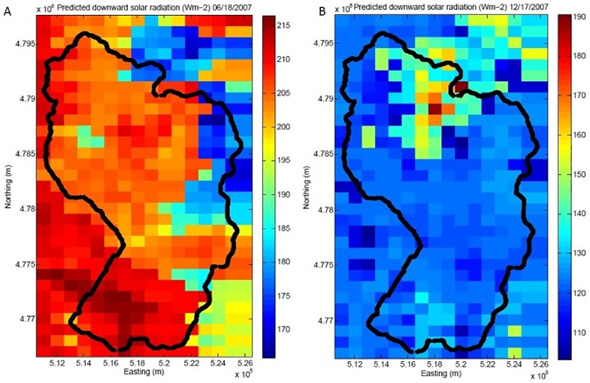
Observatory, in Idaho, USA. The maps show predicted downward solar radiation on June 18th and December
17th in 2007. Pyranometers were used to find the best predictors that estimate downward solar radiation.
Source: NIH
4. Optimising agriculture with pyranometers
In agriculture, pyranometers are used to optimise crop growth by measuring the amount of sunlight that crops receive.
Solar radiation impacts plant photosynthesis, soil temperature, water evaporation, and many other factors that directly impact crop yields. Farmers can use pyranometer data to adjust planting schedules, irrigation, and shading strategies to ensure that crops receive the optimal amount of sunlight.
By monitoring solar radiation levels, farmers can identify problems and manage their fields better, especially in regions where sunlight intensity changes frequently throughout the year. This approach not only helps increase crop production, but also saves water and other resources by adjusting to the specific needs of the crops based on the sunlight they receive.
by assessing the quantity of sunlight exposure that the crops get. Image: Freepik.com
5. Building energy management: measuring sunlight and heat flux
Pyranometers are essential in building energy management, where they help in designing and managing energy-efficient buildings. By measuring the amount of solar radiation that hits a building, pyranometers provide data that can be used to determine window placement, shading, and optimise HVAC systems (heating, ventilation, and air conditioning).
For example, architects and engineers can use pyranometer data to design shading systems, select the appropriate glazing for windows, and position solar panels effectively (see Figure 5). Additionally, building managers can monitor solar radiation levels in real time to adjust HVAC systems, ensuring that the building remains comfortable while minimising energy use. This contributes to significant energy savings and helps in achieving sustainability goals.
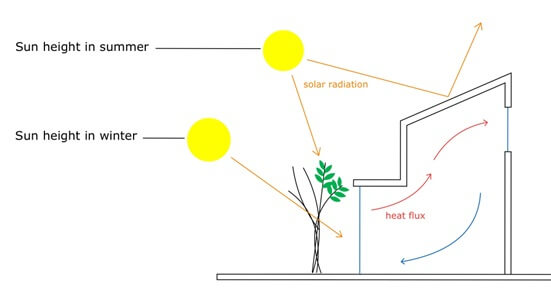
Conclusion
Pyranometers are versatile and powerful instruments used across various industries. Whether it’s optimising solar panel efficiency, improving climate models, weather forecasting, agricultural productivity, or building energy management, these instruments are crucial for understanding and utilising solar radiation effectively.
As the world continues to prioritise renewable energy and sustainability, the role of pyranometers will only become more significant. By providing accurate measurements of solar energy, they empower industries and researchers to make informed decisions that lead to better energy efficiency and a more sustainable world.








